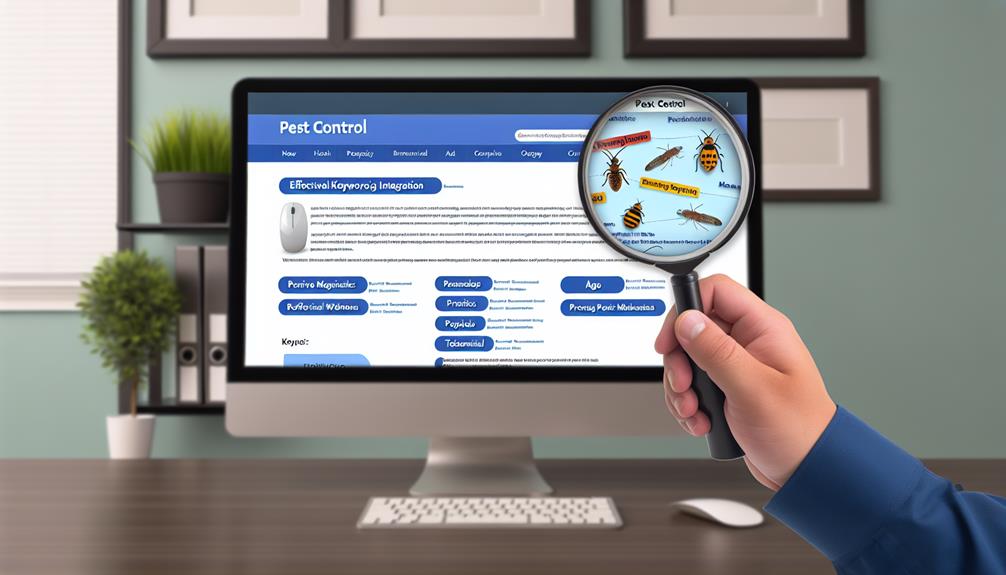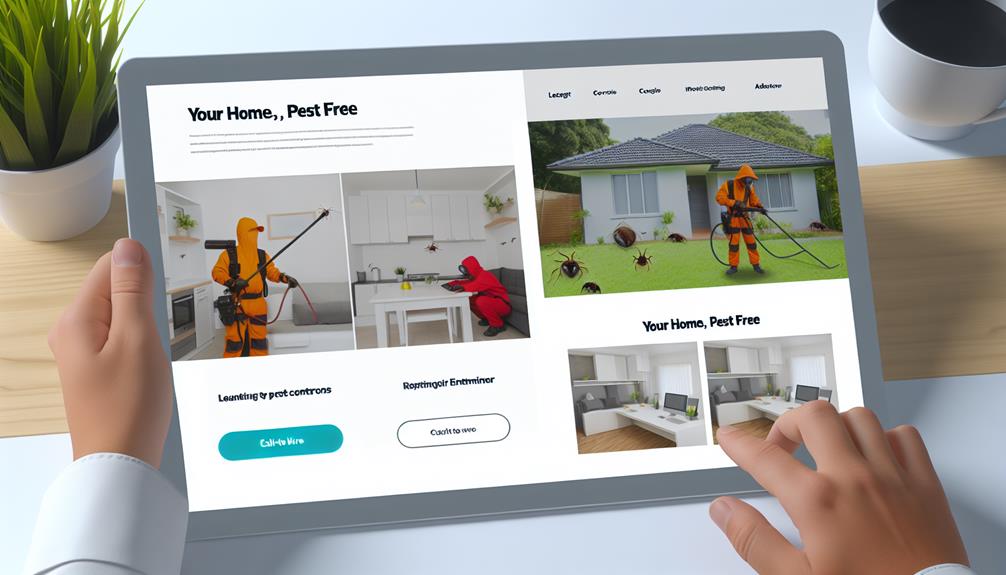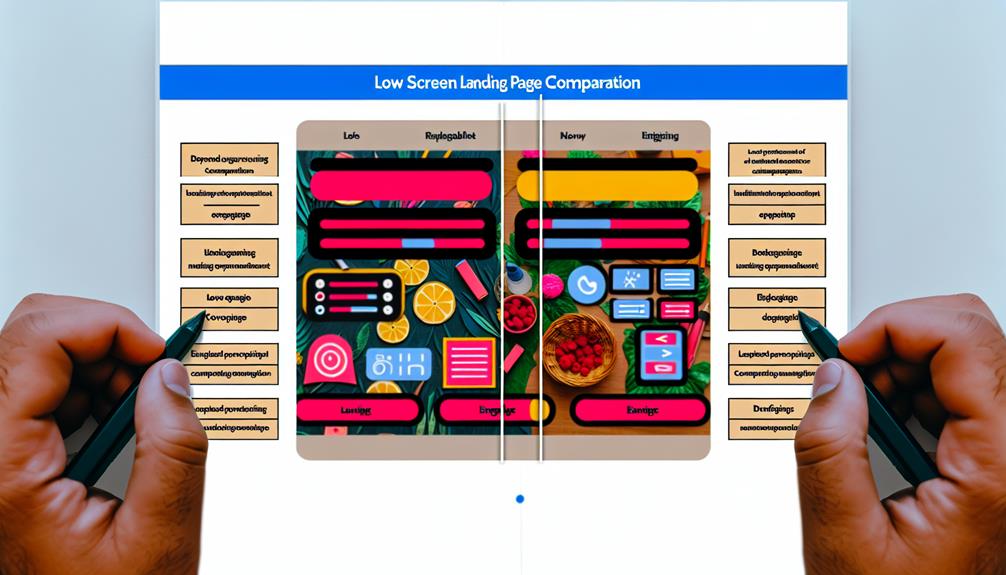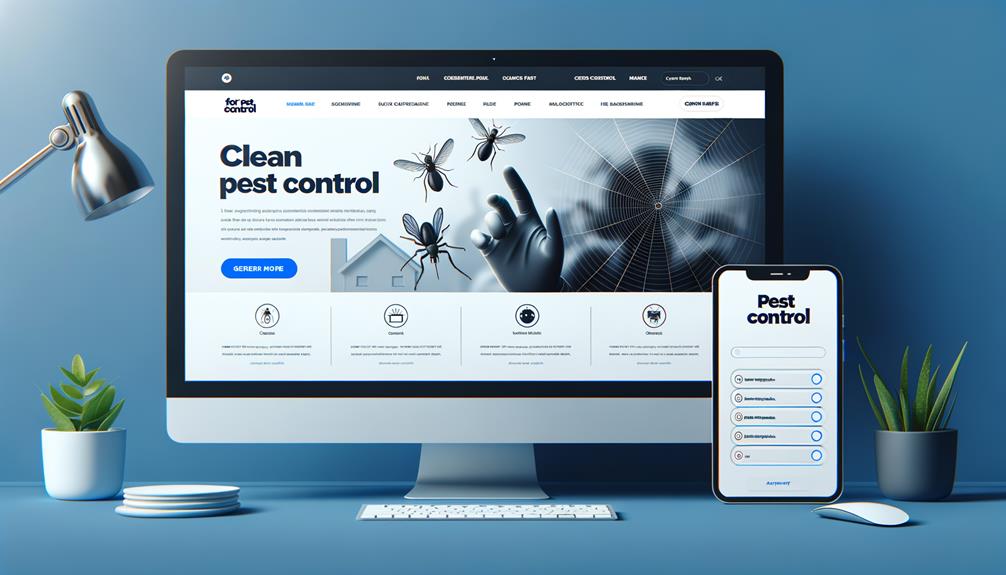If you’re looking to elevate your pest control PPC landing pages, precision is paramount. A well-crafted landing page can be the difference between a fleeting click and a committed conversion.
But how do you ensure your landing pages are optimized to attract and retain potential customers? By implementing strategic keyword selection, captivating copy, and user-friendly design, you can transform your PPC landing pages into powerful tools for driving business growth.
But that’s just the beginning. There are key tactics and techniques you can employ to maximize the impact of your pest control PPC campaigns.
Table of Contents
ToggleKey Takeaways
- Research and incorporate relevant keywords to enhance the visibility of your pest control landing pages.
- Craft compelling ad copy that grabs attention, evokes emotion, and highlights the impact of pest problems on your audience.
- Design high-converting landing pages with a clear visual hierarchy, strategic placement of call-to-action buttons, and valuable content.
- Implement clear call-to-actions that evoke trust, create urgency, and optimize the layout for easy visitor navigation.
Understanding Pest Control Keywords

Understanding pest control keywords begins with identifying the specific terms that potential customers are using to search for pest control services online. To effectively target your audience, it’s crucial to keep up with pest control trends and understand the latest pest control techniques. By incorporating these keywords into your content, you can ensure that your PPC landing pages are optimized for maximum visibility and relevance.
Pest control trends are constantly evolving as new pests emerge and environmental factors change. It’s essential to stay informed about the latest developments in pest control to address emerging issues effectively. Incorporating keywords related to these trends in your landing page content can help attract customers seeking solutions for these specific problems.
Furthermore, understanding various pest control techniques is vital for providing comprehensive services to your customers. Whether it’s eco-friendly methods, integrated pest management, or traditional extermination approaches, knowing the right keywords to include can enhance the visibility of your landing pages and attract customers seeking specific pest control solutions.
Crafting Compelling Ad Copy
To effectively target your audience with pest control PPC landing pages, you need to craft compelling ad copy that resonates with potential customers and motivates them to take action. When crafting your ad copy, it’s essential to evoke emotion in your audience to drive engagement and conversions.
To achieve this, consider the following strategies:
- Writing persuasive headlines:
- Use attention-grabbing and compelling headlines that address the pain points of your audience.
- Incorporate power words that evoke emotion and urgency, such as ‘Protect Your Home Today’ or ‘Say Goodbye to Pests for Good.’
- Creating engaging content:
- Share relatable stories or testimonials from satisfied customers to build trust and credibility.
- Highlight the potential impact of pest problems on the well-being of your audience, tapping into their fears and concerns.
Designing High-Converting Landing Pages

Crafting a visually appealing and user-friendly layout for your landing page can significantly impact your conversion rates. When designing your landing page, it’s crucial to consider the visual hierarchy. This involves arranging and prioritizing the elements on your page in a way that guides the visitor’s attention to the most important parts.
By strategically placing your call-to-action buttons, contact forms, and essential information at the forefront, you can effectively influence visitor behavior and increase the likelihood of conversions.
Additionally, conversion optimization should be at the forefront of your design strategy. This includes utilizing compelling visuals, clear and concise messaging, and a streamlined user experience to encourage visitors to take the desired action.
Ensuring that your landing page loads quickly, is easy to navigate, and provides valuable content can all contribute to higher conversion rates.
Implementing Clear Call-to-Actions
When designing your landing page, prioritize the placement of clear call-to-action buttons and contact forms, guiding visitors’ attention towards taking the desired action. Improving conversion rates starts with optimizing the layout and making it easy for visitors to know what to do next.
Here’s how you can implement clear call-to-actions to boost your pest control PPC landing pages:
- Evoke Trust and Security
Use phrases like ‘100% Satisfaction Guaranteed’ to reassure visitors.
Include trust badges and security seals to instill confidence in your visitors.
- Create a Sense of Urgency
Incorporate phrases like ‘Limited Time Offer’ to prompt quick action.
Use a countdown timer for special promotions or discounts.
Testing and Optimizing for Success

You can enhance the effectiveness of your pest control PPC landing pages by continuously testing and optimizing various elements for maximum success. A/B testing is a crucial tool for determining which versions of your landing page perform best.
By creating multiple versions of your landing page and directing traffic to each, you can analyze which elements, such as headlines, images, or call-to-action buttons, result in higher conversion rates. Conversion optimization is the ultimate goal of A/B testing, as it allows you to make data-driven decisions to improve the performance of your landing pages.
To effectively test and optimize your pest control PPC landing pages, start by identifying specific elements that you want to improve. These could include the headline, form layout, imagery, or overall page design. Once you have identified these elements, create variations to test against the original page.
Use tools like Google Optimize or Optimizely to conduct A/B tests and gather data on user behavior and conversion rates. Based on the results, make informed changes to your landing pages to continually optimize for better performance.





